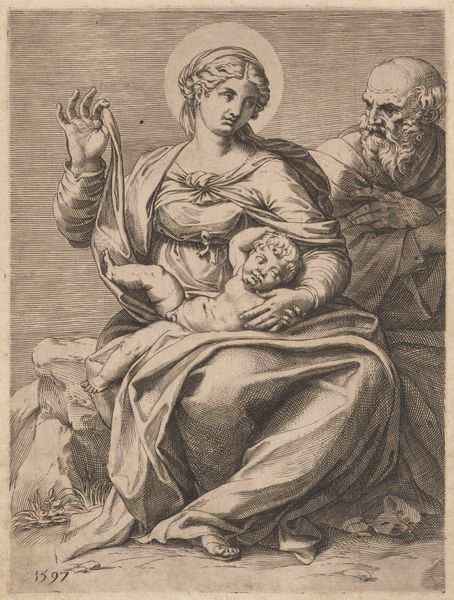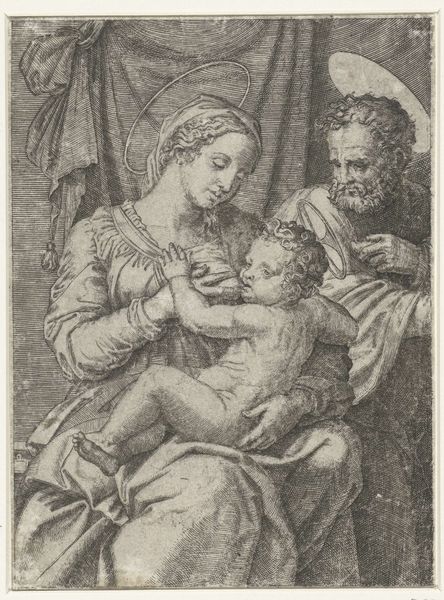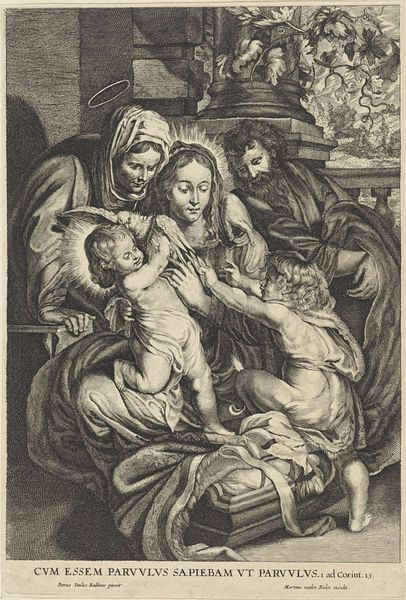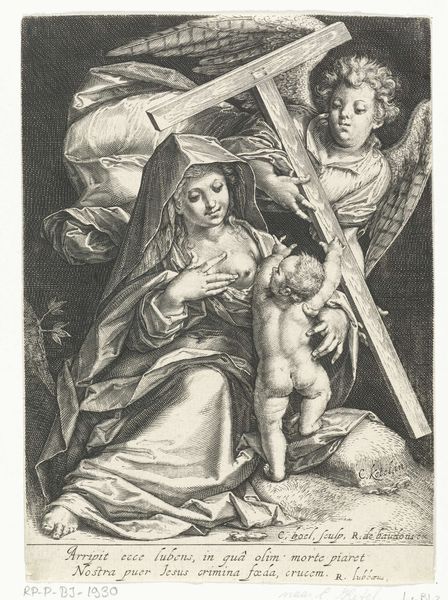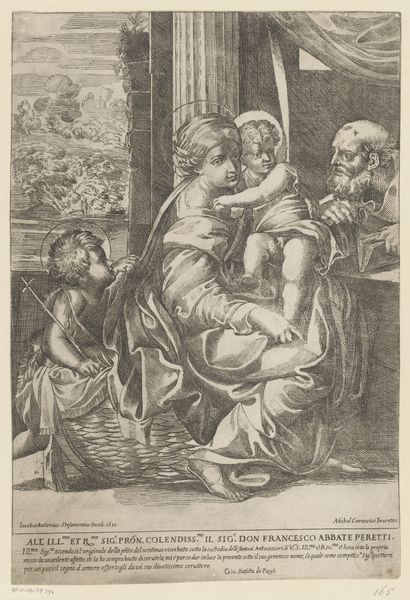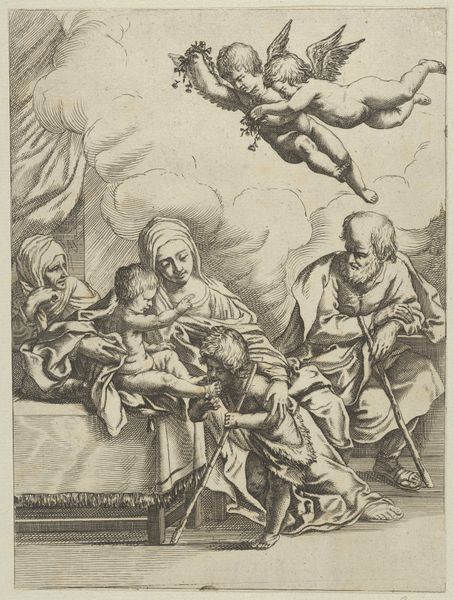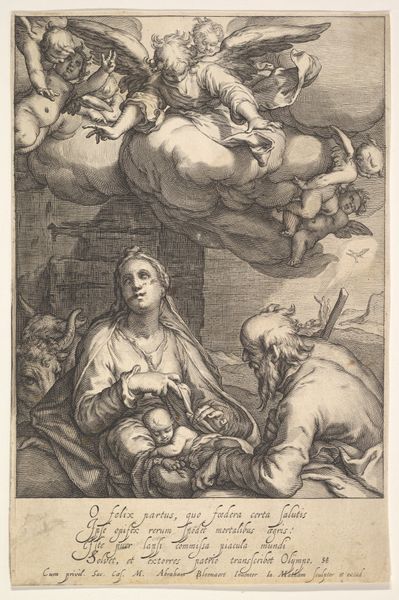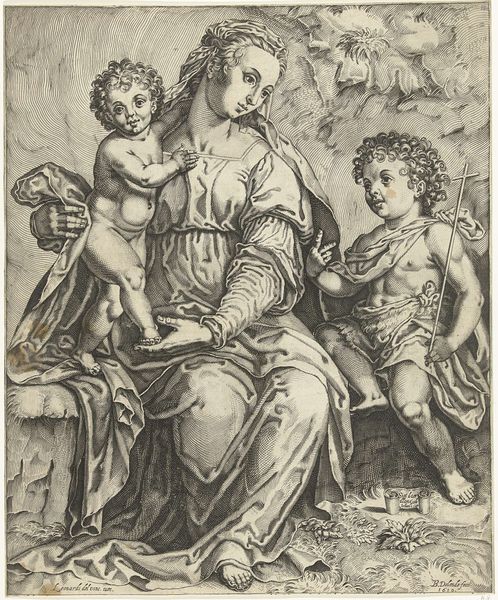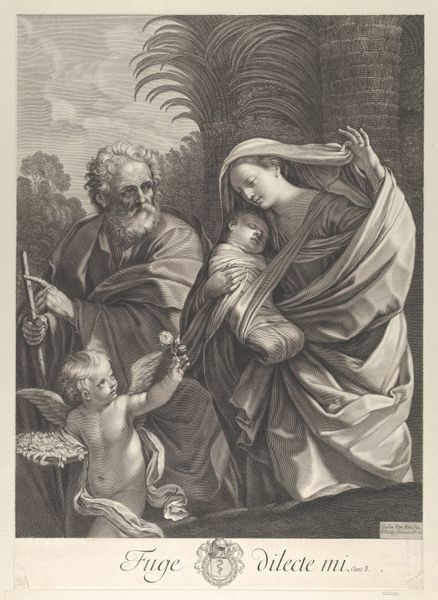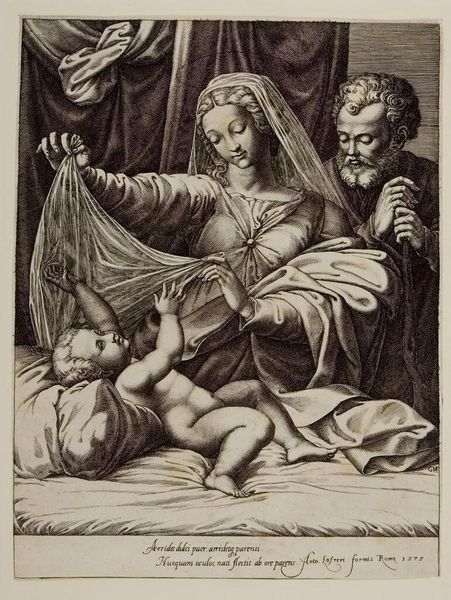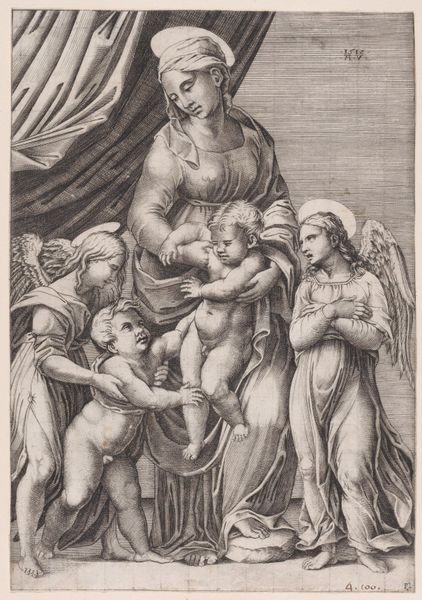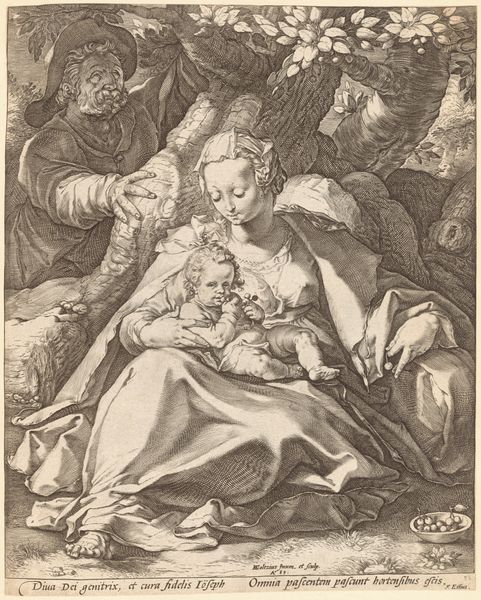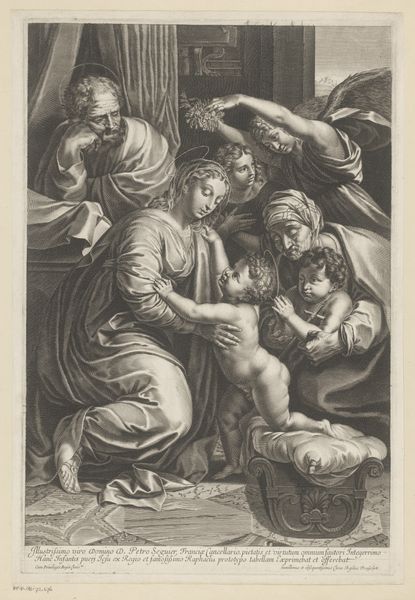
drawing, print
#
drawing
# print
#
madonna
#
child
#
history-painting
#
italian-renaissance
Dimensions: sheet: 11 5/16 x 8 1/2 in. (28.8 x 21.6 cm) trimmed
Copyright: Public Domain
Giorgio Ghisi made this print, The Madonna of Loreto, sometime in the mid-16th century using the technique of engraving. Engraving is a meticulous, physically demanding process. The artist uses a tool called a burin to carve lines directly into a metal plate, typically copper. These incised lines hold the ink, and when the plate is pressed onto paper, the image is transferred. The depth and density of the lines determine the tonal range of the print. Look closely, and you’ll see how Ghisi used hatching and cross-hatching to create a rich sense of light and shadow, defining the forms of the figures and the textures of the fabric. Engraving was a key technology for disseminating images and ideas across Europe. It allowed for the mass production of artworks, making them accessible to a wider audience. This print, with its detailed depiction of the Madonna and Child, reflects the growing market for religious imagery and the increasing importance of printmaking as a means of artistic expression and commerce. By focusing on Ghisi’s labor-intensive process, we can appreciate the skill involved and understand how printmaking democratized art in early modern Europe.
Comments
No comments
Be the first to comment and join the conversation on the ultimate creative platform.
